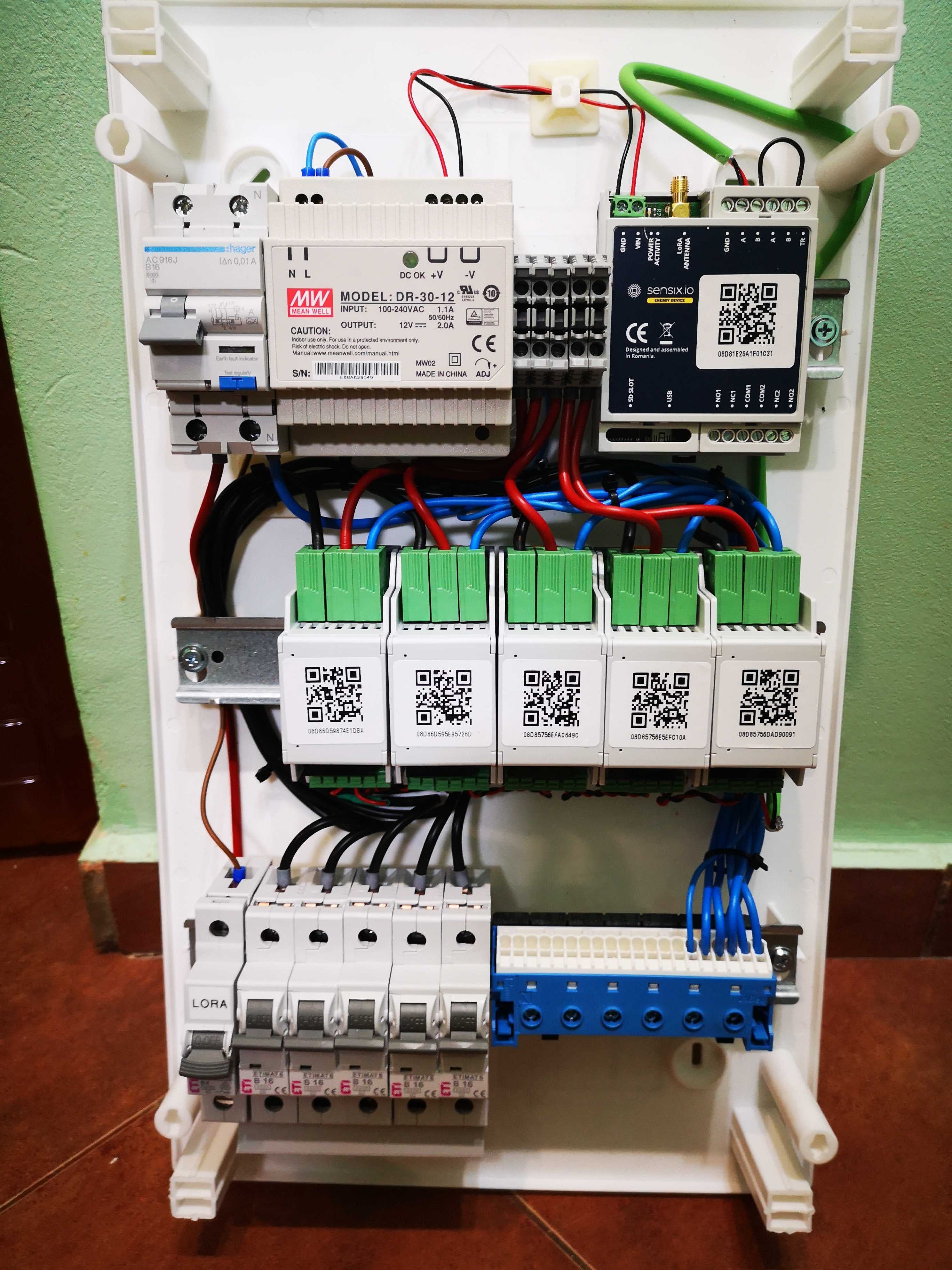PowerMonitor from A to Z, from P to R
by Victor Zahamaicu
over 1 year agoWhat is PowerMonitor and what it monitors?
PowerMonitor, as the name already says, is a device designed to monitor power quality and energy consumption. One of the amazing aspects is that it was designed in such a manner that is affordable to build and easy to deploy.
This device answers a need that is currently not really met by any other device on the market. It provides high quality metrics related to power quality at an affordable price point.
- The main function is to monitor the quality of the power delivered to equipment.
- Its secondary function is to monitor the amount of energy delivered to the equipment.
Considerable effort has been made into assuring that the design is:
- affordable to build even in small quantities;
- accurate in order to make the readings usable;
- safe and reliable so the user can depend on it, to both survive events that may appear on the power line, and deliver consistent metrics.
The Family tree of PowerMonitor
This device is an evolution from the “standard” affordable energy metres. It was initially designed as a device that would monitor energy consumption or collect data from other energy metres. While this is useful, it doesn’t bring any new features over existing devices of the same class.
During development it was concluded that power quality metrics can be collected at a high enough resolution with a high enough precision. That would make it much more useful and would fill in the gap between inexpensive energy metres and very expensive power quality metres available on the market.
Thus, PowerMonitor was born with the express purpose of providing high quality metrics in an affordable package. Additionally, to maximise the user reach and user trust in the device, the hardware and firmware are open source, for anyone to explore, study, verify and potentially tweak or adjust it for their specific need.
The challenges
The biggest challenge during the development process was designing for high quality at an affordable price. Much of the design process has focused on the manufacturability of the device while maintaining a form factor that is appealing to a wide range of users.
It was also extremely challenging to navigate one of the worst semiconductor chip shortages that ever hit the industry (more about the chip crisis right here), which effectively forced us to iterate and change the hardware and firmware.
What now?
Currently there are several revisions of the hardware design with some of them built as prototypes that are undergoing testing. The semiconductor shortage is still in effect which makes settling on a single iteration very difficult. That being said, PowerMonitor is in the testing phase and most of the work, except for adapting to component availability, is going towards form factor, ease of use and safety.
What’s next?
The next step in the development process is settling on a design, form factor and calibration procedure. We have multiple answers for all of these points but picking which one is best is more of a trial-and-error approach.
Once the initial versions of the device are out, the plan for the future is to closely observe how the device will be used and how it will be adapted. It is also in the plan, after we receive feedback, to refine the design, for even better addressability (use cases, cost etc.).
PowerMonitor - a trend setter?
PowerMonitor is designed for anyone who uses electricity (so everyone), from households to large enterprises. In practice, we expect to be used primarily for businesses of all sizes, especially because the quality of the power delivered to equipment can have an impact on operational cost.
It is important to stress (not stress out) that the device aims to provide the same power quality metrics with the same accuracy as existing devices on the market do, but at a way lower price point (10 - 50 times lower) and in a form factor that enables constant monitoring. Most devices on the market are portable solutions designed for temporary installation.
Furthermore, the fact that both the hardware design and firmware are open source is not very common, especially for devices like this one which aims to be usable in a professional, demanding setting right out of the box.
Taking into consideration all these reasons, PowerMonitor can become both a trend setter and a standard when it comes to energy infrastructure monitoring.

Previous articles
The Role of Artificial Intelligence in Optimizing Energy Efficiency in Smart Buildings
5 days agoIn an era where climate change and environmental sustainability are at the forefront of global concerns, the need for energy-efficient buildings has become more pressing. Buildings are responsible for a significant portion of global energy consumption and carbon emissions, making them a key focus for energy conservation efforts. To enter the era of smart buildings, where cutting-edge technologies, sensors, and artificial intelligence (AI) are transforming the way we think about energy efficiency, here are some of our thoughts.
Read moreWeathering the Elements: Tips for Riding Out Extremes with less Energy
19 days agoWeather is a major factor that affects energy consumption by determining specific patterns. In particular, temperature, humidity, precipitation, and wind speed all have a significant impact on how much energy we use. Several studies have explored the link between various weather conditions and energy use.
Read moreEmbracing Plastic Free July
2 months agoPlastic Free July is a global initiative aims to gather as many people as possible to be part of the solution to plastic pollution. Everything so we can have cleaner air, water, forests, etc.
Read more